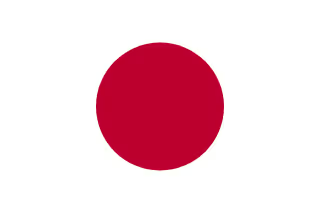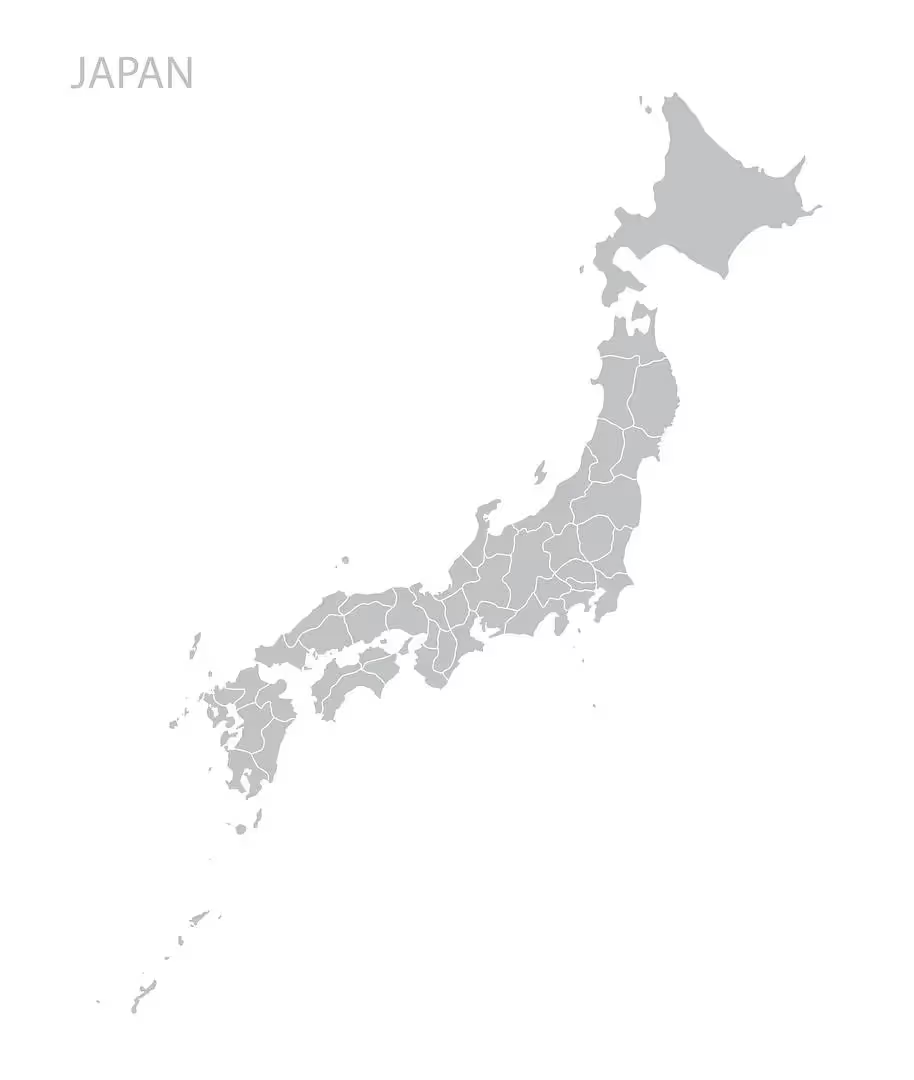

Employer of Record Guide in Japan
Navigating Japan's unique employment landscape requires understanding both traditional business culture and modern regulatory requirements. This comprehensive guide helps you hire compliantly while respecting the nuanced workplace expectations that make Japan's talent market so distinctive.
Capital City
Currency
Languages
Population size
Services available in this country:

Key stats and facts
Japan's tech-driven economy offers exceptional talent in AI, cloud computing, and cybersecurity across major hubs like Tokyo and Osaka. With a combined tax rate of approximately 20% and a GDP per capita of $31,997, Japan presents compelling opportunities for companies ready to navigate its structured employment framework.
Major economic hubs
Skills in demand
Currency
Language
GDP per Capita
Standard Tax Rate
Your EOR guide in Japan
From prefecture-specific minimum wages to complex social insurance contributions, Japan's employment regulations demand careful attention to detail. This section breaks down the essential compliance requirements, compensation structures, and leave policies you need to build a successful team in Japan.
Minimum Wage
Japan's minimum wage system operates at both national and prefectural levels, with regional rates typically exceeding the national baseline.
National Average: ¥1,054 per hour (effective October 2024)
Key Prefectural Rates (2024):
| Prefecture | Minimum Wage (JPY/hour) | Effective Date |
|---|---|---|
| Tokyo | ¥1,113 | October 1, 2024 |
| Kanagawa | ¥1,112 | October 1, 2024 |
| Osaka | ¥1,064 | October 1, 2024 |
| Aichi | ¥1,027 | October 1, 2024 |
| Kyoto | ¥1,008 | October 1, 2024 |
| Fukuoka | ¥941 | October 6, 2024 |
| Hokkaido | ¥960 | October 1, 2024 |
| Okinawa | ¥896 | October 4, 2024 |
Note: Minimum wage rates are reviewed annually and typically increase each October.
Payroll Cycle
Standard Practice: Monthly payment on a fixed date (commonly the 25th of each month)
- Legal Requirement: At least once per month
- Timing: Payment must be made by the end of the following month for work performed
- Method: Bank transfer is standard; cash payments require employee consent
Individual Income Tax
Japan operates a progressive income tax system with both national and local components.
National Income Tax Brackets (2024):
| Annual Income (JPY) | Tax Rate |
|---|---|
| Up to ¥1,950,000 | 5% |
| ¥1,950,001 to ¥3,300,000 | 10% |
| ¥3,300,001 to ¥6,950,000 | 20% |
| ¥6,950,001 to ¥9,000,000 | 23% |
| ¥9,000,001 to ¥18,000,000 | 33% |
| ¥18,000,001 to ¥40,000,000 | 40% |
| Over ¥40,000,000 | 45% |
Additional Local Taxes:
- Resident Tax: Approximately 10% (varies by municipality)
- Combined Effective Rate: Can reach 55% for highest earners
Tax Residency Criteria
Individuals are considered Japanese tax residents if they:
- Have a domicile in Japan, or
- Have resided in Japan for one year or more
Tax residents pay Japanese income tax on worldwide income, while non-residents pay only on Japan-sourced income.
Employer Payroll Contributions
Japanese employers must contribute to several mandatory social insurance programmes in addition to employee salaries.
Social Insurance Contributions (2024):
| Insurance Type | Employer Rate | Employee Rate | Total Rate |
|---|---|---|---|
| Health Insurance | 4.95% | 4.95% | 9.90% |
| Pension Insurance | 9.15% | 9.15% | 18.30% |
| Employment Insurance | 0.6-1.05%* | 0.3-0.5%* | 0.9-1.55% |
| Workers' Compensation | 0.25-8.8%** | 0% | 0.25-8.8% |
*Rates vary by industry **Rates vary significantly by industry risk level
Additional Employer Obligations:
- Child Care Leave Contribution: Included in employment insurance
- Long-term Care Insurance: 0.58% each (employees 40+ years old)
Total Employer Cost: Approximately 15-25% above base salary depending on industry and employee age.
Working Hours
Standard Work Schedule:
- Daily Limit: 8 hours per day
- Weekly Limit: 40 hours per week
- Rest Periods: 45 minutes for 6+ hour shifts, 1 hour for 8+ hour shifts
- Weekly Rest: At least one day off per week (or 4 days off per 4-week period)
Flexible Work Arrangements:
- Flextime: Allowed with core hours typically 10:00-15:00
- Discretionary Work: Available for certain professional roles
- Variable Working Hours: Permitted for specific industries
Overtime Pay
Overtime Rates:
- Standard Overtime: 25% premium for hours exceeding 8/day or 40/week
- Extended Overtime: 50% premium for hours exceeding 60/month
- Holiday Work: 35% premium
- Late Night Work: 25% premium (22:00-05:00)
Monthly Overtime Limits:
- General Limit: 45 hours per month, 360 hours per year
- Exceptional Circumstances: Up to 100 hours per month with special agreement
- Health Considerations: Mandatory health checks for employees exceeding 80 hours/month
Employment Classifications
Regular Employees (Seishain):
- Permanent employment with full benefits
- Subject to lifetime employment expectations
- Difficult to terminate without just cause
Non-Regular Employees:
- Contract Employees: Fixed-term contracts up to 3 years
- Part-time Employees: Fewer hours, proportional benefits
- Dispatched Workers: Employed by staffing agencies
Bonus Payments:
- Biannual Bonuses: Common practice (summer and winter)
- Typical Amount: 2-6 months' salary annually
- Legal Status: Not mandatory unless contractually specified
Annual Leave (Paid Vacation)
Minimum Entitlements:
| Years of Service | Annual Leave Days |
|---|---|
| 6 months | 10 days |
| 1.5 years | 11 days |
| 2.5 years | 12 days |
| 3.5 years | 14 days |
| 4.5 years | 16 days |
| 5.5 years | 18 days |
| 6.5+ years | 20 days |
Key Rules:
- Accrual: Granted after 6 months of continuous employment
- Usage Rate: Employers must ensure employees take at least 5 days annually
- Carryover: Unused days expire after 2 years
- Payout: Must be paid out upon termination
Sick Leave
Legal Framework:
- No Statutory Requirement: Japan has no mandatory paid sick leave
- Company Policies: Most employers provide 5-10 days annually
- Medical Certificates: Required for absences exceeding 3 consecutive days
- Long-term Illness: May qualify for health insurance benefits (60% of salary)
Maternity Leave
Maternity Leave (Sango Kyuka):
- Duration: 14 weeks total
- 6 weeks before due date
- 8 weeks after childbirth (mandatory)
- Compensation: 67% of salary through health insurance
- Job Protection: Position guaranteed upon return
Parental Leave
Child Care Leave (Ikuji Kyugyo):
- Duration: Until child reaches 1 year (extendable to 2 years)
- Eligibility: Available to both parents
- Sharing: Parents can take leave simultaneously or sequentially
- Compensation: 67% of salary for first 180 days, then 50%
- Job Protection: Same or equivalent position guaranteed
Special Leave Types
Nursing Care Leave:
- Duration: Up to 93 days per family member requiring care
- Compensation: 67% of salary through employment insurance
- Flexibility: Can be taken intermittently
Bereavement Leave:
- Duration: Varies by company policy (typically 1-7 days)
- Relationship: Different durations based on family relationship
- Compensation: Usually paid by employer
Leave Summary
| Leave Type | Duration | Compensation | Funding Source |
|---|---|---|---|
| Annual Leave | 10-20 days/year | 100% | Employer |
| Sick Leave | Company policy | Varies | Employer/Insurance |
| Maternity Leave | 14 weeks | 67% | Health Insurance |
| Parental Leave | Up to 2 years | 67%/50% | Employment Insurance |
| Nursing Care | 93 days | 67% | Employment Insurance |
| Bereavement | Company policy | Usually 100% | Employer |
Termination Categories
Dismissal for Cause (Kaiko):
- Requires "objectively reasonable grounds"
- Must be "socially acceptable"
- Examples: serious misconduct, criminal activity, persistent poor performance
- Burden of Proof: High standard required from employer
Ordinary Dismissal:
- Business restructuring or economic reasons
- Requires demonstration of necessity and fair process
- Must follow "four requirements" for validity
Voluntary Resignation:
- Employee-initiated termination
- Requires written notice
- May still qualify for unemployment benefits
Notice Period Requirements
Minimum Legal Requirements:
| Employment Duration | Notice Period |
|---|---|
| Less than 1 year | 30 days |
| 1-3 years | 30 days |
| 3+ years | 30 days |
Payment in Lieu:
- Employers may pay 30 days' salary instead of providing notice
- Common practice for immediate termination
- Must include average daily wage calculation
Severance Pay
Legal Requirements:
- Minimum: 30 days' average wage per year of service
- Calculation: Based on average daily wage over preceding 3 months
- Maximum: No legal maximum, but typically 1-2 years' salary
Company Practices:
- Many companies provide more generous severance
- Long-service employees may receive substantial packages
- Negotiation often occurs in termination discussions
Retirement System
Mandatory Retirement:
- Legal Age: 65 years (increasing to 70 by 2025)
- Continued Employment: Employers must offer re-employment until age 65
- Retirement Benefits: Separate from severance, based on years of service
Final Pay Requirements
Timeline: Final payment must be made within 7 days of termination or on the next regular payday, whichever is later.
Components:
- Outstanding salary
- Unused annual leave
- Severance pay
- Retirement benefits (if applicable)
Legal Protections
Prohibited Grounds for Termination:
- Pregnancy or maternity leave
- Trade union activities
- Filing labour complaints
- Discrimination based on nationality, gender, or religion
Dispute Resolution:
- Labour Standards Inspection Office
- Labour Relations Commission
- Court proceedings for wrongful dismissal
National Holidays (2025)
Japan observes 16 national holidays annually:
| Holiday | Date | Notes |
|---|---|---|
| New Year's Day | January 1 | |
| Coming of Age Day | January 13 | Second Monday in January |
| National Foundation Day | February 11 | |
| Emperor's Birthday | February 23 | |
| Vernal Equinox Day | March 20 | Varies annually |
| Showa Day | April 29 | |
| Constitution Memorial Day | May 3 | |
| Greenery Day | May 4 | |
| Children's Day | May 5 | |
| Marine Day | July 21 | Third Monday in July |
| Mountain Day | August 11 | |
| Respect for the Aged Day | September 15 | Third Monday in September |
| Autumnal Equinox Day | September 23 | Varies annually |
| Sports Day | October 13 | Second Monday in October |
| Culture Day | November 3 | |
| Labour Thanksgiving Day | November 23 |
Golden Week
Period: Late April to early May Impact: Extended holiday period combining multiple national holidays Business Considerations: Many companies close for the entire week
Holiday Pay Rules
Eligibility: All employees are entitled to holiday pay for national holidays Rate: Regular daily wage Substitute Holidays: If a national holiday falls on a regular day off, the following workday becomes a substitute holiday
Regional Variations
While national holidays apply nationwide, some regions may observe additional local festivals or events that affect business operations. Employers should be aware of local customs in their specific prefectures.
Required Documentation
Employment Contract (Rodo Keiyakusho):
- Must be provided in writing
- Include: job duties, work location, hours, salary, benefits, termination conditions
- Available in Japanese (English translation acceptable with Japanese version)
Government Forms:
- Tax Withholding Certificate: For income tax calculations
- Social Insurance Registration: Health insurance, pension, employment insurance
- Residence Card: For foreign employees
- My Number: Japanese social security number
Banking Information:
- Japanese bank account required for salary payments
- Account opening may require residence registration
Work Authorization
Japanese Citizens: No restrictions
Foreign Employees:
- Work Visa Required: Appropriate visa category for job type
- Residence Card: Must be valid throughout employment
- Status of Residence: Must match job responsibilities
- Renewal Requirements: Employer may need to support visa renewals
Background Checks
Legal Framework:
- Limited background checking compared to other countries
- Must be job-relevant and proportionate
- Employee consent required
Common Checks:
- Employment history verification
- Educational credential verification
- Criminal background (limited circumstances)
- Credit checks (financial positions only)
Data Protection Compliance
Personal Information Protection Act (PIPA):
- Strict consent requirements for data collection
- Purpose limitation for data use
- Employee rights to access and correction
- Secure data storage and transfer requirements
Cross-border Data Transfers:
- Restrictions on transferring employee data outside Japan
- Adequate protection measures required
- Employee consent may be necessary
Probationary Periods
Standard Duration: 3-6 months typical Legal Framework:
- Easier termination during probation
- Must still follow fair procedures
- Cannot exceed reasonable duration
- Performance evaluation required
Onboarding Timeline
| Step | Timeline |
|---|---|
| Job offer accepted | Day 0 |
| Work visa confirmation | Day 1-3 |
| Employment contract signed | Day 3-5 |
| Social insurance registration | Day 5-7 |
| Bank account setup | Day 7-10 |
| Tax registration completed | Day 7-10 |
| Orientation and training | Day 10-14 |
Cultural Integration
Workplace Orientation:
- Company hierarchy and reporting structure
- Business card exchange etiquette (meishi koukan)
- Meeting protocols and decision-making processes
- Dress code and professional appearance standards
Worker Classification
Employee vs Independent Contractor: Japan has strict criteria for worker classification, with most working relationships presumed to be employment.
Employee Indicators:
- Work under company direction and control
- Use company equipment and facilities
- Integrated into company operations
- Receive regular salary payments
Contractor Indicators:
- Independent business operations
- Own equipment and bear business risks
- Invoice for services provided
- Multiple clients typical
Misclassification Risks:
- Retroactive social insurance contributions
- Back payment of benefits and overtime
- Tax penalties and interest
- Labour standards violations
Note: Japanese authorities heavily scrutinise contractor arrangements, particularly for foreign workers.
Collective Bargaining
Union Landscape:
- Approximately 17% of workforce unionised
- Enterprise unions (company-specific) most common
- Industry-wide unions in some sectors
- Collective agreements override individual contracts
Employer Obligations:
- Good faith bargaining required
- Cannot discriminate against union members
- Must provide information for negotiations
- Strike actions legally protected
Cultural Workplace Norms
Hierarchy and Respect:
- Clear seniority systems (senpai-kohai relationships)
- Formal communication protocols
- Group consensus decision-making (ringi system)
- Respect for authority and experience
Work-Life Integration:
- Long working hours traditionally expected
- After-work socialising (nomikai) common
- Gradual shift toward work-life balance
- Paid leave usage historically low but increasing
Communication Style:
- Indirect communication preferred
- Avoiding direct confrontation
- Reading between the lines important
- Silence as communication tool
Remote Work Considerations
Legal Framework:
- No specific remote work legislation
- Standard labour laws apply to remote workers
- Working time management challenges
- Health and safety obligations continue
Practical Considerations:
- Equipment provision requirements
- Communication and supervision methods
- Overtime tracking difficulties
- Cultural resistance in traditional companies
Tax Implications:
- Home office expense deductions limited
- Commuting allowances may be affected
- Cross-prefectural work may have tax implications
Diversity and Inclusion
Legal Requirements:
- Equal Employment Opportunity Law prohibits gender discrimination
- Act on Promotion of Women's Participation and Advancement
- Revised Immigration Control Act supports foreign workers
Cultural Challenges:
- Traditional gender role expectations
- Age-based discrimination concerns
- Foreign worker integration issues
- LGBTQ+ rights gradually expanding
Best Practices:
- Inclusive hiring practices
- Cultural sensitivity training
- Language support for foreign employees
- Flexible work arrangements for diverse needs
Built-in benefits packages for Japan
When the world is your competition, it pays to incentivize new hires and existing alike. Borderless AI benefits packages typically inlucde:

Medical Insurance

Dental Insurance

Retirement Contribution

Life Insurance

Vision Insurance
Explore other countries

Unlock global hiring potential
Simplify your payroll and hiring processes today.








